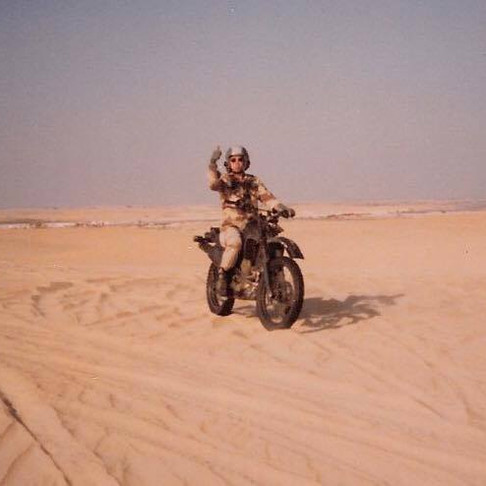Desert Shield/Storm: Air Force Special Operations Combat Control Team Deployed
- JQ Hill
- Aug 9, 2023
- 2 min read
On August 9, 1990, at King Fahd Airport, Saudi Arabia, an Air Force Special Operations (AFSOC) Combat Control Team (CCT) Survey team was deployed. The gears of a massive U.S. deployment that continued for more than five months, known as Operation Desert Shield, began to turn.
On August 9, Saddam closed the borders of Iraq and Kuwait, "trapping more than thirteen thousand westerners and other foreigners and changing the entire nature of the crisis," General Schwarzkopf wrote. Although hostilities could still be avoided, Saddam’s taking of U.S. hostages "could be cause for war." Around the time, Headquarters AFSOC directed the 1720th Special Tactics Group (STG) to deploy an eight-man pararescue (PJ) team and five combat search-and-rescue (CSAR) mission planners to develop a concept of operations in the event of U.S. participation in hostilities in the Persian Gulf region. It was the first of many taskings for the group in the months ahead.
Around the same time, at least four combat controllers—Capt Tony Tino, CMSgt Wayne Norrad, SMSgt Robert Boyle, and MSgt James "JD" Burch—deployed to Saudi Arabia as part of an AFSOC survey team to plan the movement of forces in terms of air traffic control (ATC) and airfield requirements. They ended up at King Fahd Airport, where "the last slab of concrete" had been poured and which had not yet officially opened.
The men did a quick assessment and decided the field was suitable. Captain Tino became King Fahd Airport's first airfield manager. The 1720th STG historian noted that Tino’s controllers "developed the initial runway approach routes, traffic patterns, and parking plans" and, with borrowed radios, directed the first fixed-wing aircraft to land at King Fahd International. The controllers also helped coordinate the installation of runway lighting, electricity in the control tower, potable water, and air conditioning.
Story Reference: B_0149_MARION_BROTHERS_IN_BERETS.PDF (defense.gov)







